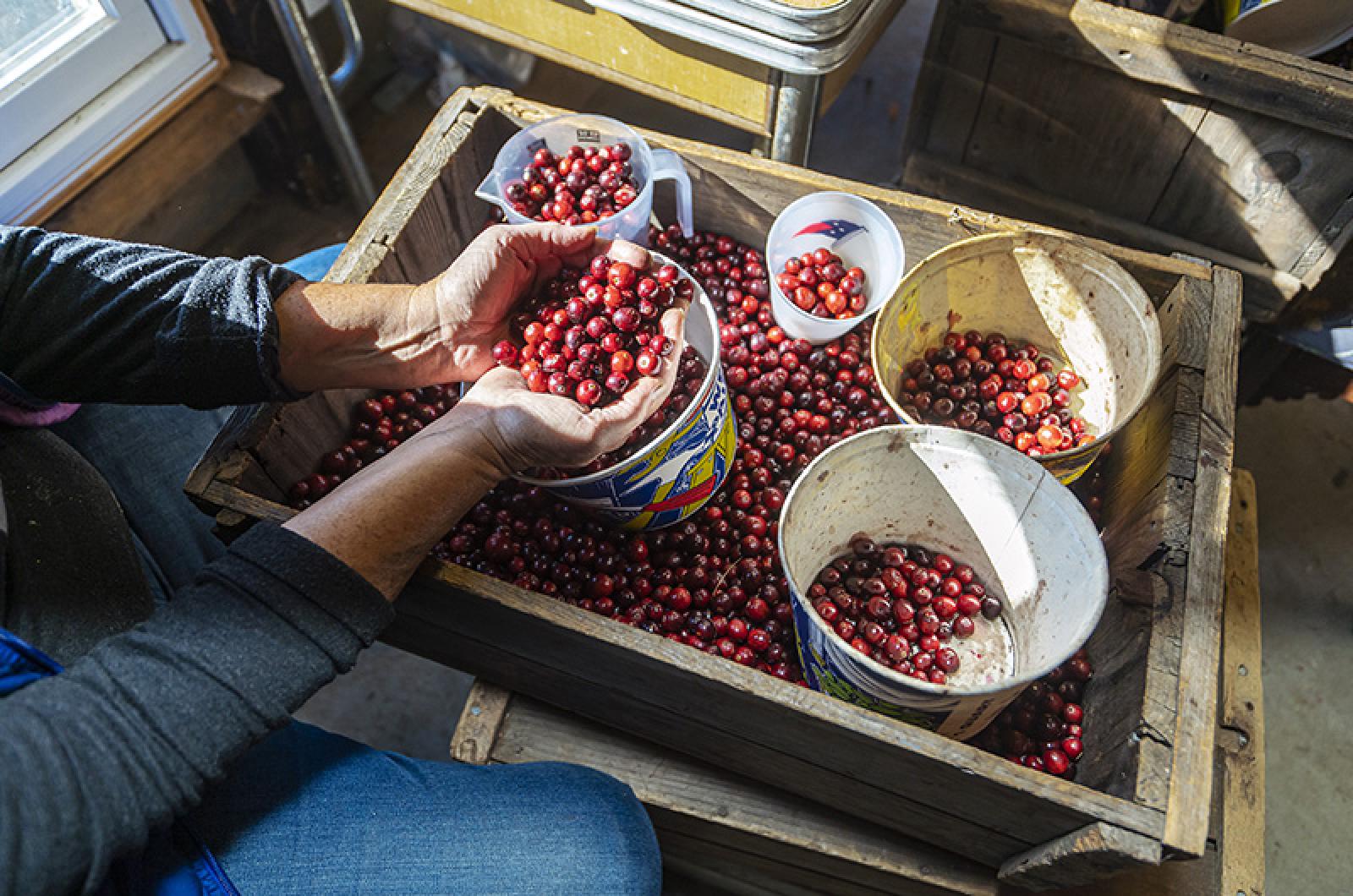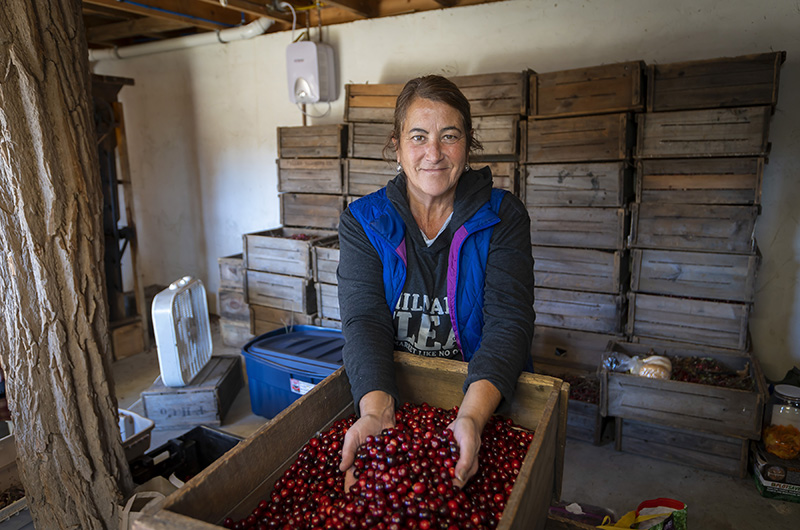Cranberry Acres sits on 23 acres of conservation land off Lambert’s Cove Road in Vineyard Haven. The cranberry bog itself is a field of red-green vines and tawny weeds, tucked behind a nondescript, gray shingled barn. At first glance it’s hard to see actual cranberries. But up close, numerous plump red pearls poke out from vines in small clusters.
Harvest season takes place in September and October, and thanks in part to new deer fencing it’s been a banner year in the bog, with an expected yield of over 2,000 pounds.
That’s a big jump from the past two years when deer browsed with impunity, leading to small harvests of about 200 pounds, said Eric Peters, chairman of the Vineyard Open Land Foundation which owns and manages the bog.
“We had so many berries that we ran out of boxes,” Mr. Peters said, adding that he had to buy two trash barrels and a plastic tub from Shirley’s to accommodate the excess.
The open land foundation, which has led numerous conservation development projects on the Island over the years, purchased Cranberry Acres in 1982. A restoration project in the bog was begun in 2004, which included a laborious process of clearing trees and putting down a foot-deep sand bed to help the vines bear fruit. The first harvest took place about three years after the plugs were first planted.
The bog is organic and dry harvested, using a technique learned from Robert Keese, who owned an off-Island organic commercial cranberry bog, Mr. Peters said. Berries from a dry harvest go straight to market, while wet harvested ones are used for juice.
Former longtime open land foundation executive director Carol Magee is the bog manager. She has been busy this month supervising the harvest and readying the berries for market, including Morning Glory Farm and Cronig’s, where they are currently sold.
“We don’t use anything on the bog except a little fertilizer,” Ms. Magee said. “We do not spray anything . . . they’re much more healthy . . . it’s much better for the environment and for humans.”
David Ross travels to the Island from Cape Cod to help with the harvest, using a lawn mower-like machine with spines to scoop the berries and deposit them into an attached wooden crate.
“It just depends on the weather, how cool it gets,” said Mr. Peters, referring to the timing of the harvest. “And because the berries do ripen, they get redder, so you want to get them when they’re just right.”
Harvesting can be done in one day. Sorting is another story.
“[Sorting] takes a couple of weeks because it’s all very labor intensive,” Mr. Peters said.
The process involves two wooden machines, both of which are over 100 years old.
“The technology hasn’t changed, it’s just that we have an electric motor [now],” said Phil Wallis, executive director of VOLF.
Harvested cranberries are dumped into a winnower, a box with a grated top which gusts air to separate the berries from debris. From there the berries go through a sorter, a tall, hulking structure with step-like boards on the back and a white conveyor belt jutting out the front. Good berries bounce down the board and onto the conveyor belt, while bad ones fall to a box in the bottom. A team of four seasoned sorters sits along the belt, two on each side, picking out any rejects the machine missed.
Bad berries can be small, white or light pink, and are squishy. Berries that are just ripe are tart and dry, and make a crisp, popping sound when bitten into. After a final quality check, the best ones are packaged into eight ounce bags for delivery.
“We do a very intense inspection of our berries because we want only the
premium ones to be sold at market,” Ms. Magee said.
Nothing goes to waste in the bog as the next-best berries, known as seconds, will be used for baking or jam. Animals get fed the runts of the bunch.
“They’ll get saved and they’ll go to the chickens,” Mr. Peters said.
The operation does not turn a profit, but homemade jam has potential, Mr. Wallis said, although a distant goal.
“We’re providing a traditional agricultural product on the Vineyard that’s local and organic, so that’s why we keep doing this,” Mr. Peters said.








Comments
Comment policy »